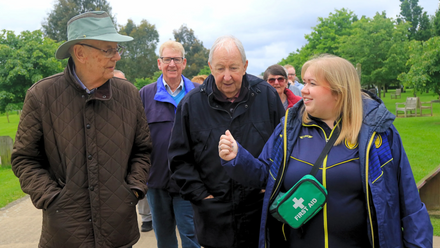Architects publish comprehensive guide on Biodiversity Net Gain

Baily Garner Architects, in collaboration with Essential Ecology, has presented an extensive guide on ‘Demystifying Biodiversity Net Gain (BNG) legislation’.
This comprehensive resource serves as an invaluable tool for developers, architects, and stakeholders navigating the complexities of BNG compliance in today's evolving regulatory landscape.
BNG legislation, which became mandatory for major planning applications on 12 February and minor planning applications on 2 April, represents a landmark shift in environmental regulations.
The legislation mandates that applicable sites achieve a minimum 10 per cent gain in biodiversity compared to the site’s existing biodiversity value.
This gain can be achieved through various measures, including on-site enhancements, off-site gains, or the purchase of statutory BNG credits.
In their detailed breakdown, Baily Garner Architects elucidates the workings of BNG legislation, providing insights into its implementation process, requirements, and exemptions.
Their resource outlines key stages of BNG compliance, from pre-planning assessments to post-planning approval, offering practical advice and top tips for developers to navigate the regulatory landscape effectively.
Bonnie York (pictured), senior architect and BNG Lead at Baily Garner said: "Our goal with this guide is to empower developers with the knowledge and tools needed to navigate Biodiversity Net Gain legislation seamlessly.
"As advocates for sustainable development, we recognise the profound importance of understanding and complying with BNG requirements.
“In alignment with our company's purpose to positively impact people's lives, fostering a harmonious relationship between development and nature becomes not just a goal but a shared responsibility."
The resource delves into the intricacies of the Statutory Metric, the tool used to measure biodiversity value, and emphasises the importance of following the Biodiversity Gain Hierarchy.
Through worked examples and FAQs, the guide addresses common queries and provides practical guidance for achieving BNG targets on-site.
Baily Garner Architects underscores the significance of early engagement with local planning authorities, competent ecologists and architects to integrate BNG considerations into the planning process effectively.
The firm also highlights the role of landscape design and construction programming in maximising BNG scores and ensuring long-term biodiversity enhancement.
Bonnie York added: "Early integration of BNG considerations into sketch layouts is vital, ensuring adequate space allocation for biodiversity measures. Developers must weigh habitat retention against development density, considering implications for Gross Development Value (GDV) and profitability.
"Through proactive engagement, strategic planning, and innovative design, we can achieve both developmental goals and biodiversity conservation objectives."
The release of ‘Demystifying Biodiversity Net Gain (BNG) legislation’ highlights Baily Garner Architects' commitment to thought leadership and sustainability in the architectural industry.
The guide is available on their website and is expected to serve as a valuable resource for developers, architects, and policymakers navigating the evolving landscape of environmental legislation.



